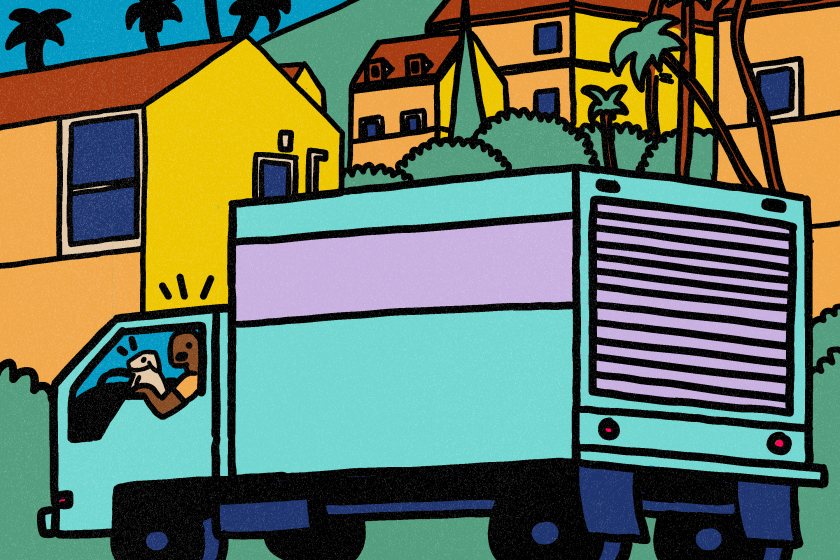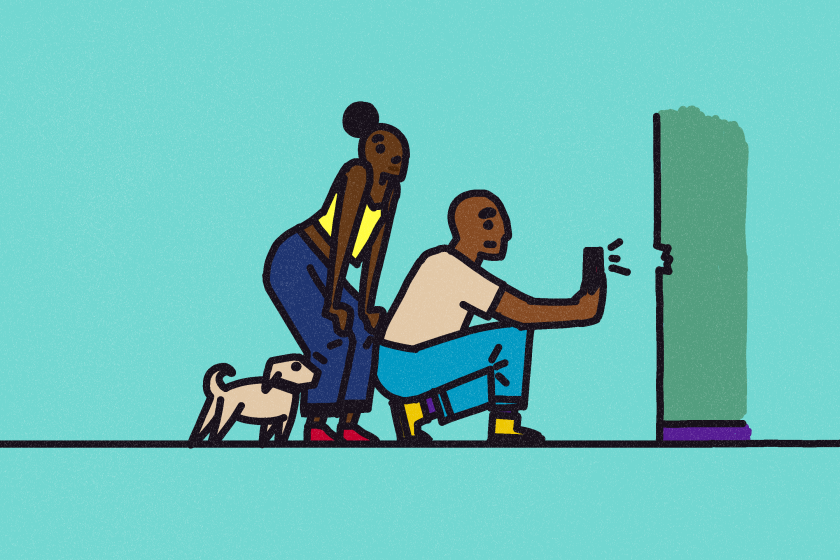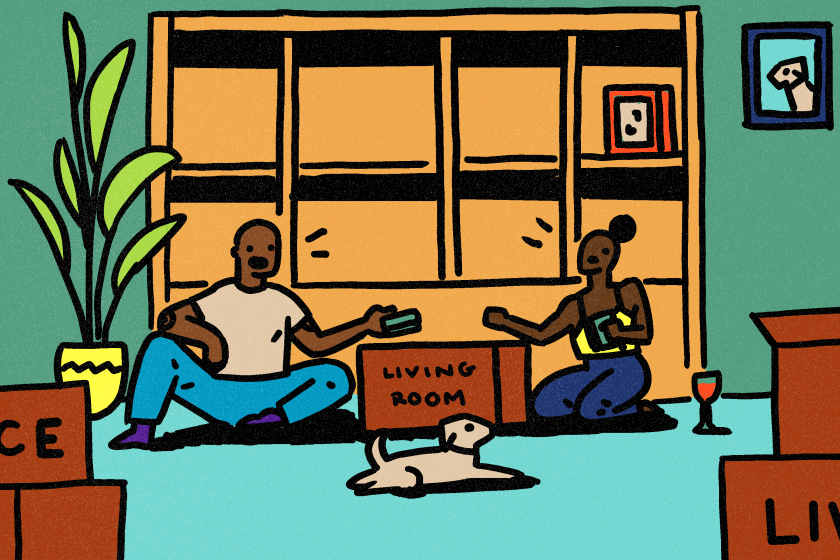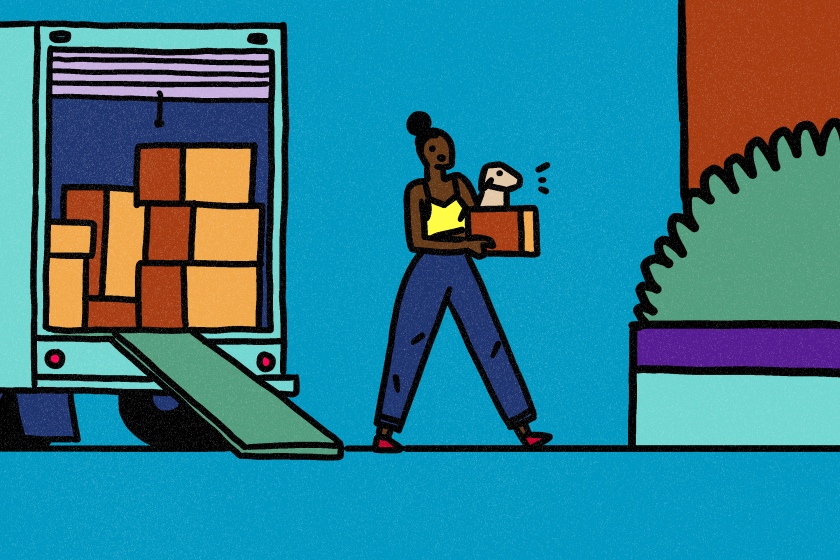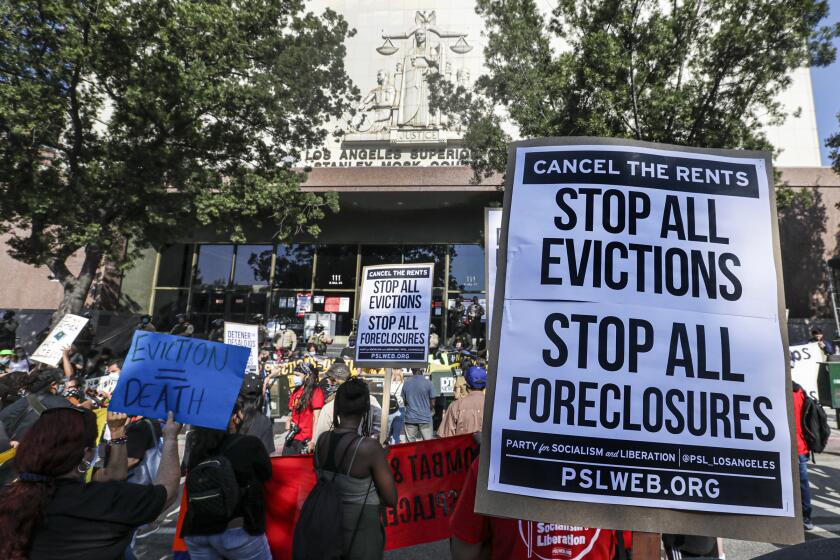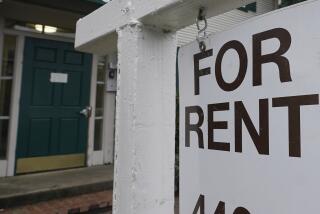How to find and apply for affordable housing programs, such as Section 8

- Share via
More than 17 million people live in rental housing in California, and more than half of them are rent burdened, meaning they pay more than 30% of their income for housing. For people who are also low-income, affordable housing programs might be available to provide relief.
But demand is high.
“There’s always more demand than there are housing units, and it still is the case,” said Linda Jenkins, acting director of the Los Angeles County Development Authority.
And the cost of housing was on the rise well before the COVID-19 pandemic clobbered the state’s economy.
“We needed a lot of affordable housing before COVID, and we’re probably going to need a lot more after COVID,” Linda Mandolini, president of the Bay Area nonprofit Eden Housing, said.
To get assistance paying the rent, you’ll have to navigate applications, requirements and wait lists, in addition to the limited supply. Here’s what you need to know.
What are the programs, and who qualifies?
In most cases, programs are administered through city or county housing agencies using federal funding from the U.S. Department of Housing and Urban Development, or HUD. The types of programs vary. Some, like Section 8, pay money directly to landlords to offset the cost of your rental. Others, like public housing, are subsidized by the government to keep your rent low.
How do you know if you qualify? In many cases, it depends on whether your household makes less than the median income where you live. HUD set L.A. County’s median household income as $77,300 for 2020. In Orange County it is $103,000; $97,800 for Ventura County; $75,300 for San Bernardino County. If you make 30% to 80% less than the median in your area, you may qualify for housing assistance.
An eviction notice isn’t the end of the line. Especially during the COVID-19 pandemic, there are many ways to fight it.
What is the process?
Step 1 is relatively simple: Determine where you want to live. You’ll have to work with the housing agency in that area.
And that’s Step 2: Contact the housing authority for the area. If it’s within the city of Los Angeles, use the city’s Housing Authority’s website to begin the application process. The agency requires you to either apply in person (check the website or call for the latest procedures related to COVID-19), or download the application and mail it in. (If you don’t have a printer or access to the internet, check a local library.) The application center is near MacArthur Park (2600 Wilshire Blvd., Los Angeles, 90057). The phone number is (213) 252-1020.
For other cities in Los Angeles County, check city websites, or HUD’s Resource Locator, to find the local housing authority. You can also check Los Angeles County Housing to see what is available by typing in the ZIP Code or city of your choice. Once you click on the location, you are provided a contact number.
Orange and Ventura counties have housing authorities that cover the whole county.
An interview or briefing may be required before you are approved. You’ll be asked for documents that prove your identity and income. The Los Angeles housing authority requires the following documents, though other agencies may have different requirements:
- Driver’s license
- Birth certificates
- Social Security cards
- Any immigration or naturalization documents
- Copies of pay stubs
- W-2 tax documents
- Bank records
- Medical receipts
From there, the housing authority will provide the information specific to your situation.
But you’ll want to do some searching of your own for a rental unit.
If you’re like most people in Southern California, you live in a rental.
Web tools
These websites can save you time. Before you contact your local housing authority, you can search these sites to see if there is available housing in your desired area.
- affordablehousingonline.com: This site is designed to make searching for low-income apartments and waitlists easier. With each apartment listing, they have a “Learn how to apply” link that directs you to the housing authority.
- usa.gov/finding-home: A government website that gives you national resources to find low-income housing across the country. You’ll find helpful links such as “Find Affordable Rental Housing” and “How to Get Help Paying Rent.”
- housing.lacounty.gov: Search by city, county or ZIP Code to find rental listings in Los Angeles County.
- lowincomehousing.us: This site allows you to search for low-income housing by ZIP Code and filters your results.
- voa.org/find-housing: This site allows you to search for rentals and also provides information on programs you may qualify for.
Section 8
The Section 8 Housing Choice Voucher is a federal program that can cover part of your rent.
To begin the application process, you must reach out to your local housing authority (see above).
Once you know where you want to live, you can use the HUD application to calculate your household income compared with the average income in the selected area. You must meet the income requirements to receive a Section 8 voucher.
HUD publishes a list of properties that have worked with Section 8 vouchers. A property may not be on the HUD list, but could still accept a Section 8 voucher. In California it is illegal to discriminate against Section 8 voucher holders.
After coordinating with the housing authority to fill out the Section 8 application, you go on a waitlist. You can check waitlist times online.
Once you are in the program, you will have a briefing with the local housing authority. These briefings are required before you can receive a Section 8 voucher. The voucher is proof that you have been approved for the program by the housing authority.
Once you have your voucher, you have a minimum of 60 days to find a rental. Some housing authorities will allow more time.
Keep in mind, the voucher cannot be applied toward your security deposit. The money you receive through the program is sent directly to the landlord every month.
What you can do before, during and after your tenancy to get as much of your security deposit back as possible, plus what to do in case of a dispute with your landlord.
Public housing
Public housing was created to provide affordable housing for low-income families, individuals, elderly people and people with disabilities. HUD provides federal aid to housing agencies that manage the properties.
According to HUD, a housing agency determines your eligibility on three factors:
- Annual household income.
- Age and/or disability.
- Citizenship or eligible immigration status.
If you make 50% to 80% less than the median income of your area, you may qualify for public housing. You should fill out a written application with your local housing agency.
The Los Angeles Housing Authority has multiple public housing sites:
Central Los Angeles
- Avalon Gardens
- Pueblo Del Rio
Watts
- Gonzaque Village
- Nickerson Gardens
- Imperial Courts
- Jordan Downs
Harbor
- Rancho San Pedro
East Los Angeles
- Estrada Courts
- Rose Hill Courts
- Pico Gardens
- William Mead
- Ramona Gardens
San Fernando Valley
- San Fernando Gardens
West L.A.
- Mar Vista Gardens
Section 202 housing for the elderly
Section 202 is a program for low-income people older than 62, or elderly people who are too weak to work.
HUD works with nonprofits and co-ops to provide this type of housing. Eligibility for this program extends to low-income households that have at least one person who is at least 62 years old at the time of initial occupancy, according to the HUD website.
Tenants living in a Section 202 building will have to pay a rate based on the operating costs of the facility, according to the National Housing Law Project. However, newer buildings give tenants rental assistance, in which tenants pay 30% of their income.
To apply, visit a housing authority website and see if they list Section 202 openings. If they do not, you can call the housing authority or use one of the web tools above.
If you’re like most people in Southern California, you live in a rental.
Section 811 housing for a person with disabilities
Section 811 provides housing for low-income adults with disabilities. Families that include an adult with a disability can also qualify. HUD lists eligibility “as a physical or developmental disability or chronic mental illness,” on its website.
Much like Section 202, tenants living in an older property pay a budget-based rent, while newer ones have tenants pay 30% of their annual income. And just like Section 202, applications must be submitted through the area’s housing authority.
Each Section 811 property has its own preferences. If you match one of their preferences, then you can be placed higher on the waitlist. These preferences can include being elderly or a military veteran.
More to Read
Sign up for Essential California
The most important California stories and recommendations in your inbox every morning.
You may occasionally receive promotional content from the Los Angeles Times.
